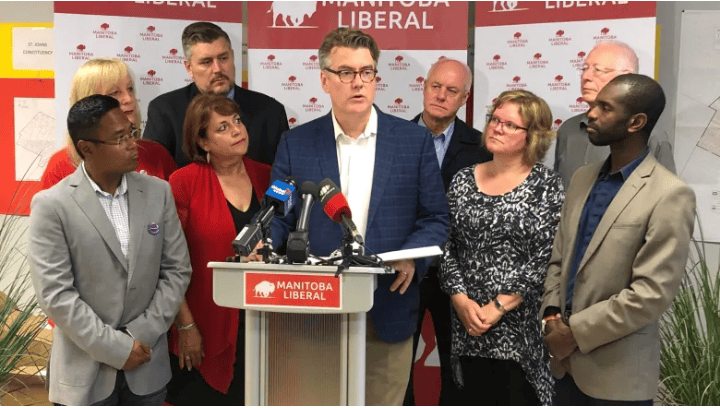
The Manitoba Liberals are planning to boost spending to $16 billion for infrastructure in the province over the span of 10 years, taking a greener approach to roads, bridges and transit.
The Liberals also believe their plan, which is not costed, would see capital investments into strategic infrastructure that would yield returns of $21 billion over 10 years.
The Liberal plan would sees investments in upkeep and improving highways across the province; improving accessibility for buildings, schools and recreation centres; making communities easier to access by foot and transit; and ensuring northern roads and ice roads are maintained.
“We have an opportunity to invest in infrastructure that can take our economy to a new level, we can invest in infrastructure that can help transform our economy,” said Liberal Leader Dougald Lamont.
The NDP has committed to spend $1.65 billion each year during their first term if elected, and the Tories are also upping projected spending, with $1.49 billion for the budget this year.
The increase by the Tories is a rebound from the Pallister government cutting a total of $150 million in funding for highways during the 2018 budget in an attempt to lower the deficit.
But a deficit is something that Lamont would be open to, especially given the fact that not all funding he’s looking for is included in the current budget.
“We’d be willing to borrow to make it happen,” he said. “I don’t trust the government’s numbers on the deficit at all.”
The auditor general previously slammed the government, citing a “significant concern” for inflating the budget an extra $347 million.
But when asked where the money would come from in the budget, Lamont said “most of it is already there,” but did not clarify where the rest of would come from.
“Everybody who’s hired to do this work gets paid, they spend their money in the Manitoba economy. So, it flows right through and then everybody who sees some of that money ends up paying taxes on it,” he said.
The Progressive Conservatives believe the Liberals’ plan would bring the deficit back.
“Just like the NDP, the Liberals have failed to be transparent with Manitobans on how they plan to pay for their election promises,” wrote a PC party spokesperson in an email to CBC News.
The Liberals’ initial spending on infrastructure would be close to the current $1.1 billion the PC government is spending now, but would slowly ramp up in the later half of the 10-year timeline, according to Lamont.
“We can’t just go from zero to 60 overnight, we actually have to be able to make sure that people have the capacity to grow,” he said.
He claims a lack of investment in infrastructure has left Winnipeg’s roads in shambles, and highways around the province deteriorating.
“Manitoba’s infrastructure challenges are such a huge problem because we’ve seen decades of under-investment in basic infrastructure,” he said.
Points of focus
One of the key points of the Liberals’ plan is to focus on improving northern winter roads, ice roads, and major highways.
The Liberals’ plan includes a revival of accessible infrastructure, which will be included in all future builds, and result in retrofitting public buildings, schools and businesses.
Along with a greener and healthier community, which would focus on transit infrastructure and local recreation centres, the Liberals plan to study rail relocation.
Lamont said there are hundreds of rail cars carrying hazardous materials through residential neighbourhoods and it warrants a look.
“We believe there’s a strong case that would actually be lower cost in the long run and certainly make our city more efficient to move heavy rail traffic outside of Winnipeg,” he said.
The study would cost $3 million.
The Liberals also say their “buy local” policy would apply to infrastructure spending, as Lamont noted that many construction companies have felt the worst of the cuts.
The plan also outlines a desire to fund “gateways” in the province such as airports, border crossings and provincial highways to make them more effective.


